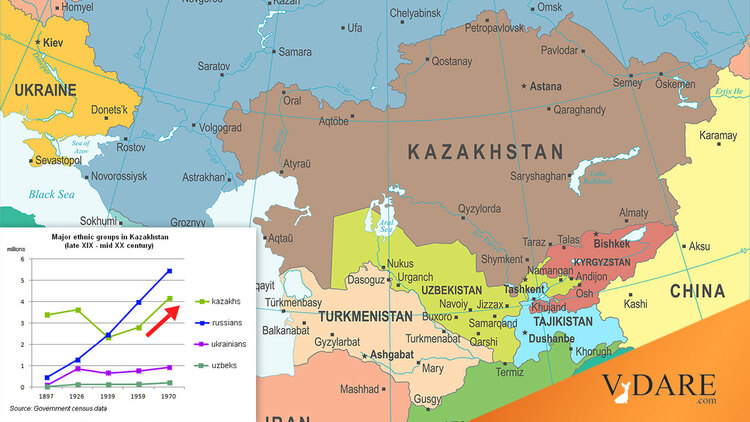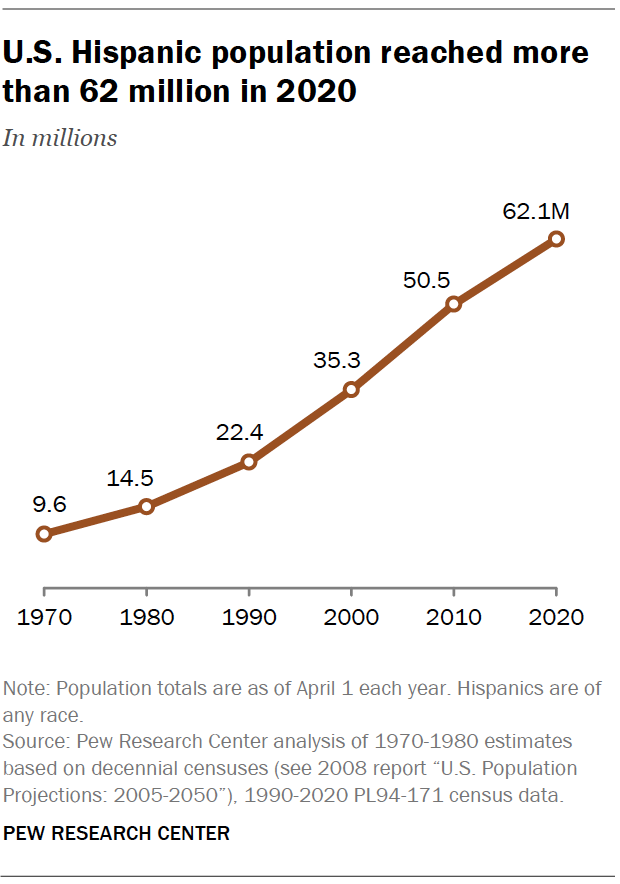


01/06/2024
Many people in the West worry that demographic change, fueled by mass migration both legal and illegal, will soon have deteriorated to a point where there will be no stopping or reversing the process. But things can change both ways in a country’s demographic trajectory. And they do so with surprising frequency. Thus a counterexample: the former Soviet Union state of Kazakhstan.
Needless to say, despair is not an unreasonable position for a normal Westerner to take in the face of rapid government-mandated change. When someone moves into an apartment next to yours, or a coworker is replaced by an immigrant, these changes feel permanent. And that feeling of permanence is often solidified by Main Stream Media Narratives reinforcing peoples’ lived reality through endless stories about how immigration turned Virginia from a deeply conservative state into one that votes reliably blue [How Voters Turned Virginia From Deep Red to Solid Blue, by Sabrina Tavernise and Robert Gebeloff, NYT, November 9, 2019] or that Texas is now a minority-white state destined to vote blue in the upcoming election [Texas demographer: ’It’s basically over for Anglos,’ by Gary Scharrer, Houston Chronicle, February 24, 2011], which keeps not happening.
But this lived reality and these MSM Narratives are not the whole story.
Thus in 1959, after decades of state policy implemented by the Soviet Union, the Kazakhs, the Turkic-speaking native people of Kazakhstan, conquered by the Russia Empire in the 19th century and taken over by its Communist successor state, were a minority in their own land. Between 1926 and 1939 the Kazakh share of the Soviet Union’s puppet Kazakh Autonomous Socialist Soviet Republic’s population fell from 58.5% to 37.8%. Not only had the Kazakhs been reduced to a minority in their own homeland in just under a decade, but a 1930–1933 famine, today called the Asharshylyk by the Kazakhs, had reduced the ethnic Kazakh population from 3.6 million to 2.3 million people, and created millions more internal refugees.
It must also be mentioned that the Asharshylyk famine was a deliberately engineered famine [Seeing like a Soviet State: Settlement of Nomadic Kazakhs, 1928–1934, by Matthew J. Payne, 2011] which came about as a result of the Soviet policies of collectivization, which makes the Kazakh famine a parallel to the Ukrainian Holodomor.
At the same time that Soviet policy resulted in large-scale starvation, dislocation, and social collapse of the Kazakh population, it was also encouraging the mass migration of non-Kazakhs into Kazakhstan. In the same 1929-1939 period that saw the Kazakh population collapse, the population of ethnic Russians doubled from 1.4 million, or from 20.6% of the Kazakhstan’s population, to 40%, making Russians the new plurality.
These immigration trends continued well into the 1970s, when Russians peaked at 42.8% of the Kazakhstan’s population and the Kazakhs themselves had made only a modest recovery from their 1959 low of 30% to 32.4% in the 1970 census.
It is here that parallels must be drawn with the situation of the United States and its legacy population. In the 1980s the U.S., controlled by neoliberals dedicated to causes such as globalization and free trade, enacted a series of policies which resulted in the mass deindustrialization of the American heartland, dislocating millions of people and causing incomes to shrink [An Industrial Plan for (White) America, White Papers Substack, December 19, 2023].

This state of affairs has given rise to what Steve Sailer has called “deaths of despair.” More than 100,000 Americans, mostly white males, are dying each year from drug, alcohol, and suicide related causes [Men And Suicide: What You Should Know, Henry Ford Health, January 20, 2020]. Most of these Americans are middle-aged, formerly gainfully employed, and part of a family unit.

As these domestic policies impoverished Americans and resulted in population shrinkage from the despair-related attrition, mass migration was transforming the United States beyond recognition. In 1960 just 5.8 million Hispanics resided in the United States, but some 30 years later in 1990 the Hispanic population had increased near 4-fold to 22.3 million people. As of 2020, it was 62.1 million, 19% of all Americans, and the country’s second largest ethnic group according to the Pew Research Center. In the same time period, the immigrant share of the US population increase from 5.4% in 1960 to 8% in 1990. Today the immigrant share of the US population sits at some 14% [The immigrant population in the U.S. is climbing again, setting a record last year, by Joel Rose, NPR, September 14, 2023].
The parallels between the decline of the Kazakh people in their own country and the decline of the Heritage American population are striking. But they also diverge. Kazakh demographic decline eventually reversed. American demographic decline, however, is an ongoing trend.
Kazakhs remained a minority in their own country for another 40-some years after 1939. But by 1989 the native population of Kazakhs, helped by along by a steadily recovering fertility rate, had returned to 39.7% of the overall population. And the white majority of Kazakhstan, at this point constituting some 50% of the population and composed of a coalition of Russians, Germans, Ukrainians, et al. was beginning to enter a decline as the Soviet Union disintegrated and organized Kazakh interest groups began asserting themselves.
Two years after the 1989 census, in 1991, the Soviet Union finally collapsed, ushering in a period of great struggle in the post-Soviet successor states — Kazakhstan included. The fertility rate for the white and Kazakh populations alike crashed, the economy contracted and widespread social disarray gripped the country, in yet another parallel with the modern United States.
However, as the old Soviet system came apart, a newly formed and explicitly pro-Kazakh government asserted its ethnic identity, restoring language, culture, tradition, and pride to a people who had suffered without any form of political representation for almost a century.
Even today. the Kazakhs are undoing damage to their way of life, as the government begins the transition away from the Soviet imposed Cyrillic alphabet to a Kazakh-derived Latin alphabet now used by many of the other Turkic peoples — above all, Turkey itself [Switching to Latin alphabet further opens Kazakhstan to the world, Alberto Turkstra, Astana Times, March 13, 2018].
By 1999, just nine years after the collapse of the Soviet Union, the Kazakhs had become a majority in their own country again, at 53.5% of the population — very similar to the 57.8% the white majority in America currently holds, according to the US Census. In the face of the new explicitly pro-Kazakh government, the vast majority of Whites in Kazakhstan opted to return to their own ethnic homelands, often with the assistance of both the Kazakh government and the governments of their home countries.
One example of how the Kazakhs achieved this peaceful demographic transition: by defining their new country as a nation-state through the insertion of paragraphs in their first two constitutions (written in 1993 and 1995) that defined the newly sovereign Kazakhstan as the home of the Kazakh people.
Today, 23 years after the Kazakhs regained majority status in their country, their demographic majority has been secured beyond all doubt. As of the 2023 population estimates the ethnic Kazakhs hold a 70.7% demographic majority in their own country,
It’s important to note that the situation in America and the broader West today is nowhere near as bad as the worst periods of Kazakh demographic displacement.
But, conversely, trends in the West are much less positive.
However, the more that Americans know of the positive, peaceful, and prosperous transition the Kazakhs have made back to majority status in their nation-state, the more they — and all the peoples of the West — can be assured that they are capable of the same.
James Karlsson is the founder and director of the White-Papers Policy Institute. Read them on Substack, follow them on Twitter, and message them on Telegram.